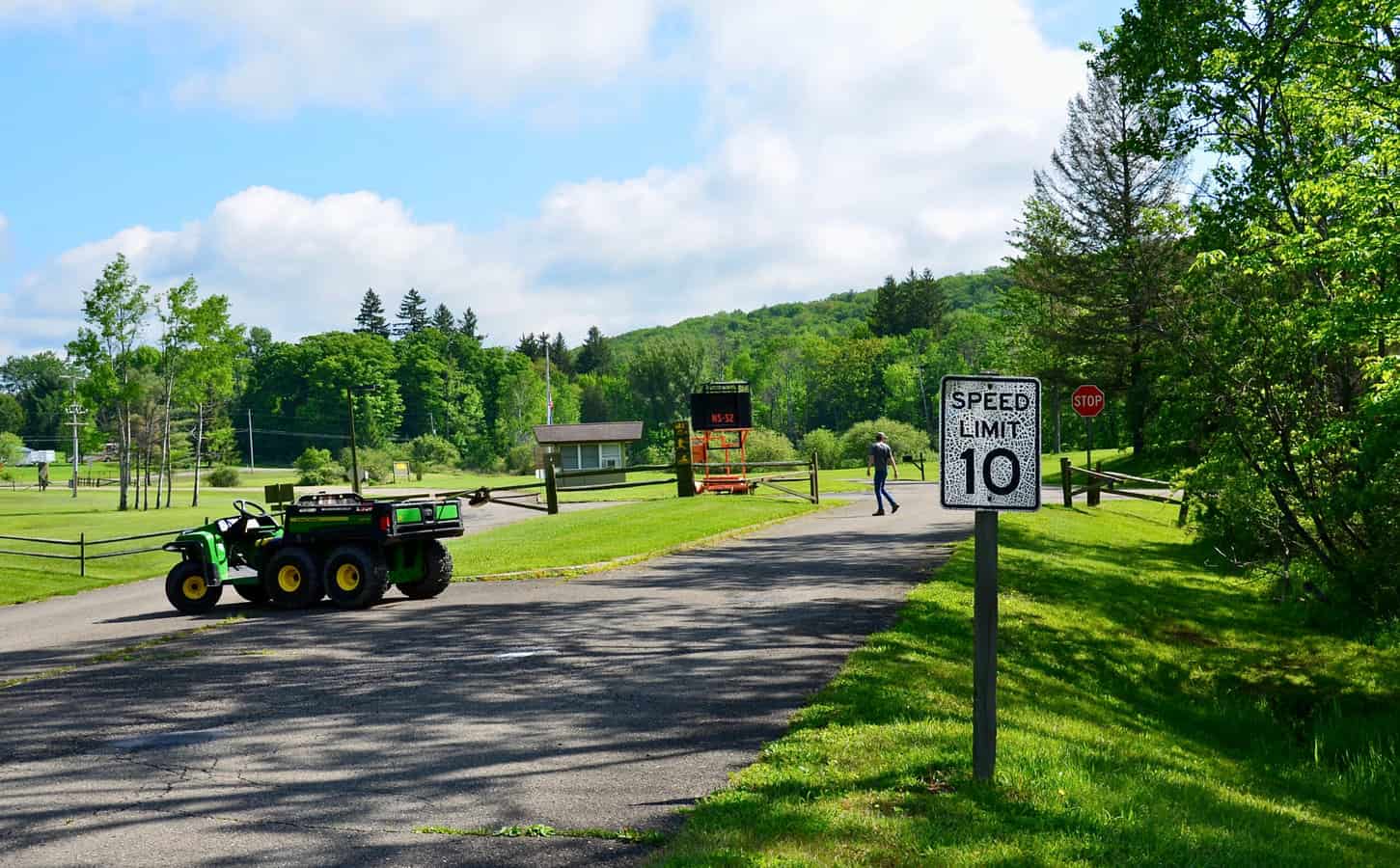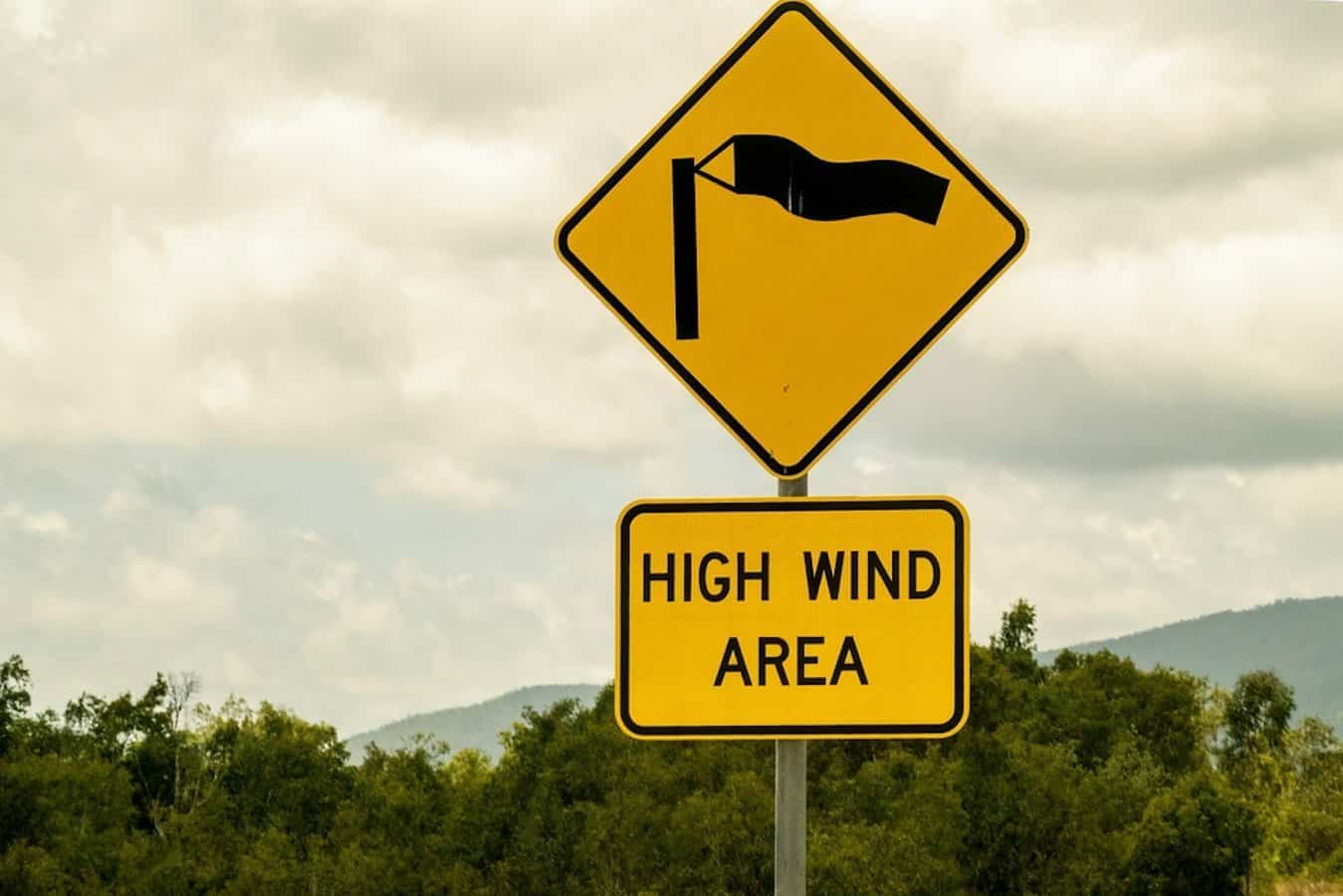
How Are RVs Affected By Wind Speed?
If you’ve ever driven an RV across the prairies, you’ve probably felt the wind. It can be very unnerving as the wind pushes against the sides of the motorhome or wags the trailer around behind the tow vehicle. There may even be times when your RV is stationary and you can feel the wind trying to play with it. There is no doubt that RVs are affected by wind speed. But just how dangerous is wind speed for RVs?
It’s hard to find published research on the topic of RVs and safe levels of wind speed. However the Western Transportation Institute at Montana State University published research data (Comparative Evaluation of Wind Warning Systems, 2006). The study used aggregate information about the effects of wind speed on RVs and other vehicles traveling on roads. They didn’t use stationary RVs in their findings.
How do sidewinds affect stationary RVs?
RVs that are stationary are far less likely to move around or flip due to winds. However, with their relatively narrow widths and high profiles, they do flip when they are stationary in extreme conditions. A study done at Kent State University looked at this scenario.
The study found that perpendicular wind speeds of 53 mph could overturn a stationary 18-foot travel trailer. It took 65 mph winds to upset a 20-foot motorhome. This is something that RV owners should be aware of before they camp in areas that are subject to frequent high winds.
How do sidewinds affect RVs that are traveling on the highway?
RVs traveling at highway speeds are most at risk of tipping over when it’s windy. The Western Transportation Institute study found that sidewind speeds of as low as 35 miles per hour can cause vehicles to slide on pavement. Travel trailers (at 27 feet long) could start to slide on pavement at speeds of 16 mph and flip at just 34 mph. It takes gusts of just 33 mph to cause a 12-foot high, 43-foot long motorhome that weighs 15,500 lbs to slide. A motorhome that size can flip at 74 mph.
The chart below gives detailed wind speed safety details for a variety of RVs.
Sliding and Overturn Wind Speeds for RVs With a 3-Foot Wheel Diameter
| RV Type | Empty Weight (lbs) | Length (feet) | Height (feet) | Overturning Wind Speed (MPH) | Sliding Wind Speed (MPH) |
|---|---|---|---|---|---|
| Motorhomes | 9,000 10,000 12,000 14,000 15,500 22,000 27,000 | 26 30 34 36 43 40 45 | 10 12 12 12 11 12 13 | 80 65 67 70 74 84 81 | 35 31 32 33 34 40 40 |
| Camper Vans | 4500 7000 | 17 20 | 7 10 | 101 80 | 38 35 |
| Travel Trailers | 1800 2200 3300 4000 | 27.5 18 27.5 28 | 9 9 9 10 | 39 53 52 51 | 16 22 22 22 |
| Fifth Wheel Trailers | 4500 5000 6000 8000 | 34 36 31 36 | 10.2 10.5 11 12 | 37 37 41 41 | 21 22 25 25 |
Sliding and Overturn Wind Speeds for RVs With a 2-Foot Wheel Diameter
| RV Type | Empty Weight (lbs) | Length (feet) | Height (feet) | Overturning Wind Speed (MPH) | Sliding Wind Speed (MPH) |
|---|---|---|---|---|---|
| Motorhomes | 9,000 10,000 12,000 14,000 15,500 22,000 27,000 | 26 30 34 36 43 40 45 | 10 12 12 12 11 12 13 | 79 65 67 70 74 80 83 | 34 30 31 33 33 39 39 |
| Camper Vans | 4500 7000 | 17 20 | 7 10 | 100 80 | 36 34 |
| Travel Trailers | 1800 2200 3300 4000 | 27.5 18 27.5 28 | 9 9 9 10 | 38 52 52 51 | 16 21 21 22 |
| Fifth Wheel Trailers | 4500 5000 6000 8000 | 4500 5000 6000 8000 | 10.2 10.5 11 12 | 37 37 41 40 | 21 21 24 25 |
Wheel size really appears to have a negligible effect on RV stability in wind. Wind speeds as low as 16 miles per hour can cause dangerous trailer sway when traveling at highway speeds. If you have a travel trailer, sway can be significantly reduced by using a weight distribution hitch and sway bars.
Whatever rig you have, driving on secondary highways at lower speeds can help mitigate the risk of having an accident due to wind speeds. Another option may be to pull over and park until the wind dies down.
Check wind speed on RV LIFE Trip Wizard
RV LIFE Trip Wizard is the ultimate trip planner for RVers. Not only can you plan an RV-safe route based on your RV’s specifications, as well as find campgrounds and points of interest along the way, but you can also enable weather layers under the map settings, including a wind speed layer, to have better insight on the areas you’re traveling. You can also enable the weather radar and wildfire layers as well.
Related articles:





Very good information. Usable in detail. A must for RV’ers.
Those are great points and good comments by the readers; I took notes in my phone. Concerning whether to put down your stabilizers to create more stability in high winds, therefore risking damage to your stabilizers due to the wind rocking your camper: I would chose to leave my stabilizers down for the increased stability, and accept the risk that they may have some damage if the wind is too severe. I have had to deal with damage to my stabilizers and repairing them is work, but I believe the damage to the camper/RV if it flips would be much greater. I guess that we each have to weigh the risks and benefits on that.
I too would be curious about how travel speeds affect susceptibility of wind sliding or tipping a trailer/rv. My wife certainly thinks it’s a critical element. I’m not so sure of the science.
I noticed that there was no data or comparisons regarding highway speeds and perpendicular winds.
I’m curious about driving speeds affecting tipping??
RV Parks often don’t like to welcome you before noon but when cross winds are likely I like to start traveling early, even before dawn so that I get the majority of my driving done before the wind kicks up and before the heat of the day arrives.
My husband and I travel with a 37’’ 5th wheel towed by his restored 1985 2-axel Peterbilt. Wind is a daily occurrence where we live so we’re used to it and follow the same driving guidelines as big rigs. We suggest RVers with larger rigs do the same.
Thank you for your well documented and informative article on wind speed. I was curious about a wind condition that has occurred twice while I was traveling on separate sunny days across the flat Nevada desert on HWY 50. My RV is a 25 foot hi-profile and over-weight. My speed was above 65 mph and the cross wind was less than 20 mph, it was about 85 degrees.
I was hit by a wind gust so strong that I almost lost control of the RV. On one occasion my over-correction took me into the opposing traffic lane after re-entering the roadway from the dirt shoulder, fortuitously I was the only vehicle on the road. The event lasted less than 5 seconds, it blew one of the decorative body panels off of the RV roof.
Looking in my the side view mirror, I saw no evidence of a dust-devil or other unusual condition. I was curious if you were aware of the explanation of these events.
I would add that you need to pay attention to how your trailer is loaded. If your weight isn’t properly distributed, your trailer will be prone to sway and you will find yourself driving with one hand on the trailer brake controller to keep it going straight. Your weight should be distributed so that it is approximately the same on the trailer, hitch, and tow vehicle axles. Too much weight behind the trailer axle is especially dangerous. The best way to know your weights is to visit a commercial scale, but you can come close by reading the owners manual for your tow vehicle and trailer and taking recommended measurements. A good anti-sway system in addition to a weight distribution hitch is also a big plus. I have a Hensley hitch on my 28 foot trailer and drove along the Chicago skyway when wind was consistently gusting at more than 50 miles per hour and barely felt the wind. I didn’t find out how high it was until I saw it on the news the following day.